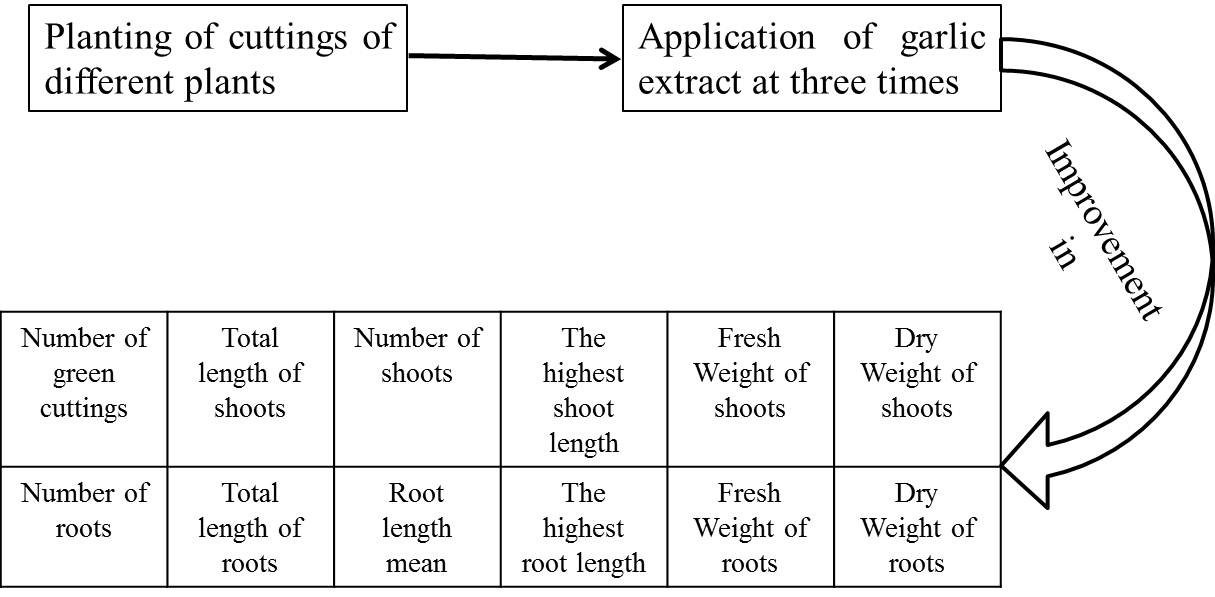The first report: The effect of garlic extract on rooting of cuttings of some ornamental plants and fruit trees

Published 2020-04-23
Keywords
- antimicrobial property,
- callus,
- culture substrate,
- grape,
- hormone
- sycamore,
- wild privet ...More
How to Cite
Abstract
One of the problems with the use of cuttings, particularly woody and semi-woody ones, is to root them for propagation of various plant species. The use of rooting hormones involves a high cost of foreign exchange and creates many environmental problems. Garlic extract has a lot of antimicrobial properties and can prevent the release of microorganisms in the culture medium of plants. In this study, garlic extract at three concentrations (0, 25, and 50 g/L) was investigated on the rooting of three different species include easy-to-root cuttings (rose, wild privet, and poplar), moderate-root cuttings (sycamore, berry, and grape), and hard-to-root cuttings (apple, sour cherry, and cherry) in three applications of the culture substrate, on the cuttings, and in the callus stage. Results showed that garlic extract can be used at a concentration of 25 g/L at the callus formation stage to improve the quantity and quality of grape cuttings in terms of shooting and rooting. The quantity and quality of shoots and roots for wild privet cuttings can be improved with garlic extract at 25 g/L and be used on the cuttings. Garlic extract at concentrations of 50 and 25 g/L can be used in the callus stage to enhance the quantity and quality of sycamore and berry cuttings, respectively. No positive effects were observed in the other plants, or positive effects were found only either on shooting or on rooting traits.





